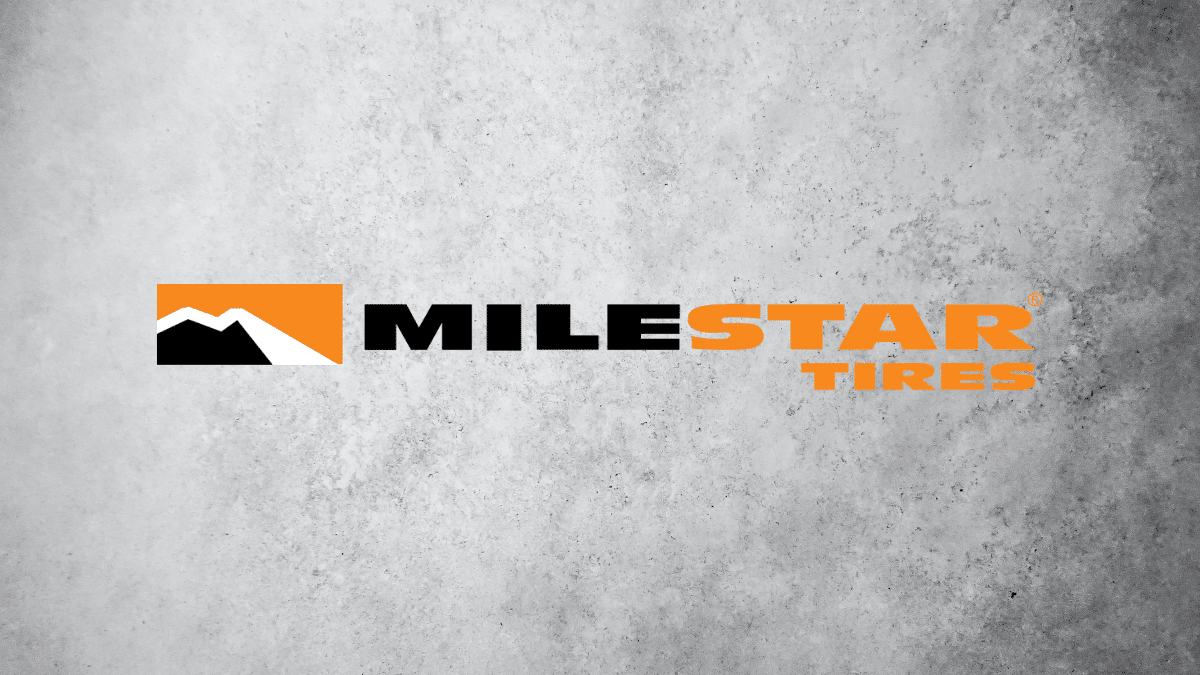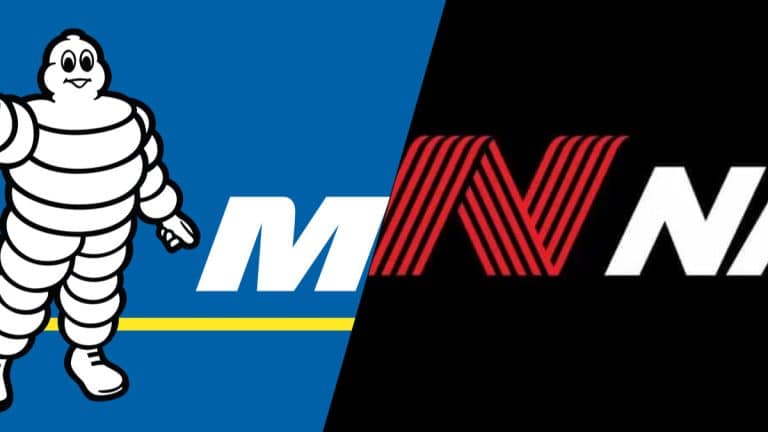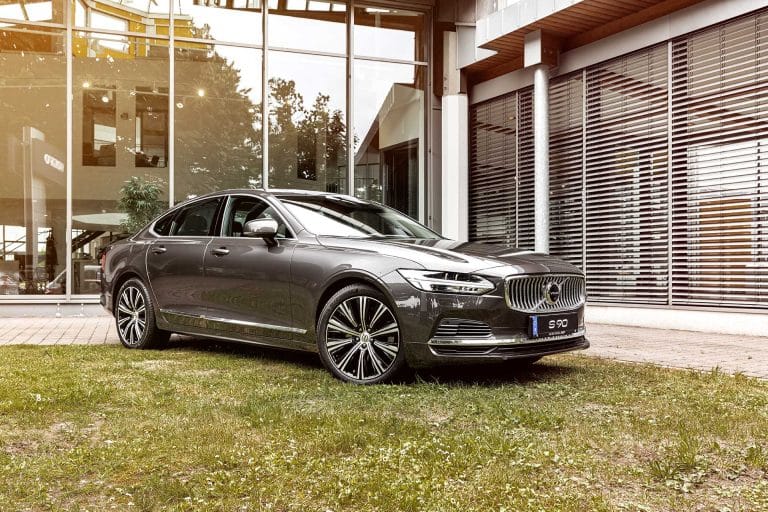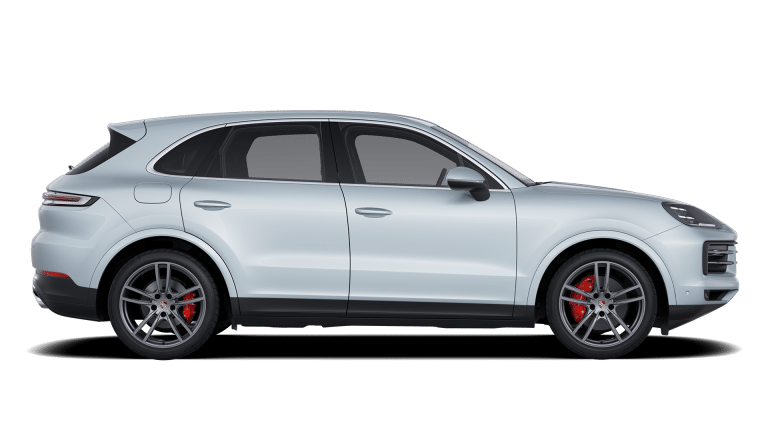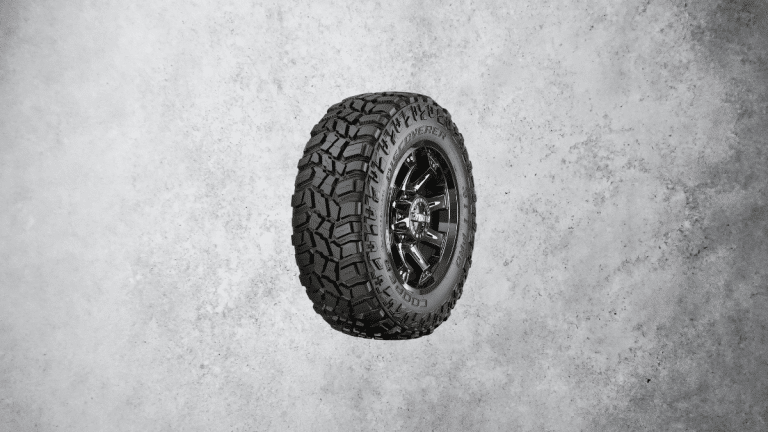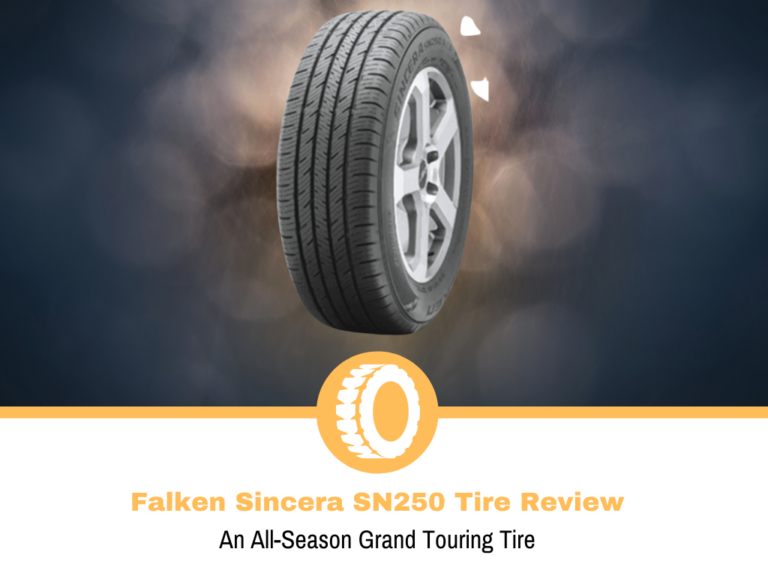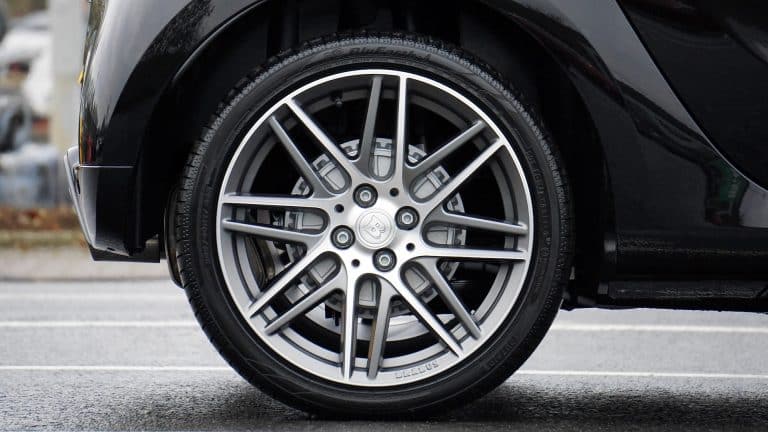Milestar Tires Review: Only in Certain Situations
In the world of tires, having as many options as possible is something that we car owners cherish. A wide range of manufacturers and models, from multiple price tiers is crucial to getting a product that would suit anyone.
There are many situations where people are after something a bit more affordable. In these situations I usually recommend the mid-range options, but with tons of budget-friendly manufacturers, are they worth it?
On the lower end of the price spectrum, we have many Chinese brands that generally make lousy tires. With that said, there are non-Chinese brands like Milestar that are hitting the market.
The company was founded in 2006, so it doesn’t have decades of experience in the tire industry. It’s under the Tireco umbrella, which is a domestic brand that’s been around since the early 70s.
As part of Tireco, there are multiple brands, all of which are aiming to battle the affordable market. Among the several names here are Nankang and Westlake, brands that are on the opposite side of the spectrum in terms of me recommending them.
Having this in mind, where does Milestar fall? Despite being a relatively young company, there are loads of models on the market, so let’s look at 10 of the more popular options to see where it stands.
Milestar Tires Review
Here are the best Milestar tires currently on the market:
#1. MS70 All-Season
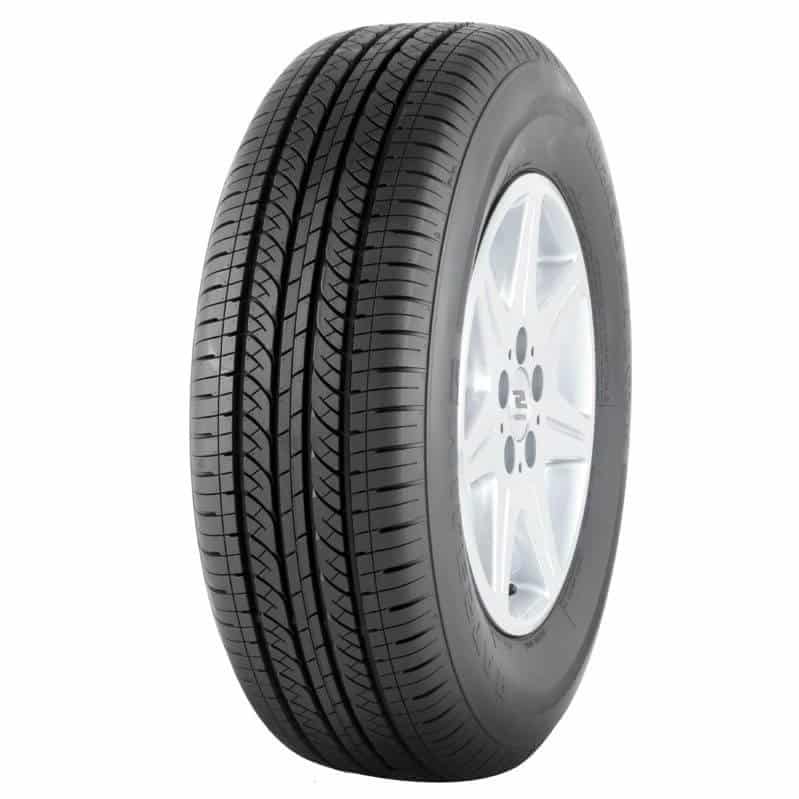
Don't know the correct size tire to purchase? Start here!
The most common tire most people would be after is the MS70 All-Season. It’s an all-season touring tire, designed for dependable performance throughout the year, with features to match.
Milestar went with a symmetrical design for a more flexible rotation, which should help with longevity. The pattern features sipes aimed at improved wet performance. They also work in combination with the circumferential grooves to improve the aquaplaning resistance. To improve handling and lateral traction, the tire features vertical sipes along the shoulder blocks.
Around town on a dry road, the MS70 All-Season isn’t the worst. It will do an acceptable job of delivering grip and traction, something you won’t find on wet roads. I wouldn’t classify it as unsafe, but I wouldn’t be too comfortable with it in terms of handling and braking distances. Things don’t improve too much in snowy situations, as the tire doesn’t offer a lot of traction even in lighter conditions.
The refinement levels on the other hand are pretty decent. With the MS70 All-Season, you’ll get solid comfort and the tire won’t struggle too much with most bumps. It doesn’t absorb all vibrations, but at this price point, you shouldn’t expect miracles. The noise levels are also acceptable and the tire is only noticeable on the highway.
As a cheap touring tire, the MS70 All-Season is far from a sporty tire. It lacks the responsiveness and feedback for you to have fun with it. On a positive note, you’re getting a 40,000-mile treadwear warranty, which may be less than its rivals, but they are also more expensive.
Pros
- Acceptable dry performance
- Well refined
- 40,000-mile treadwear warranty
Cons
- Poor wet performance
- Barely usable on snow
#2. Weatherguard AS710 Sport
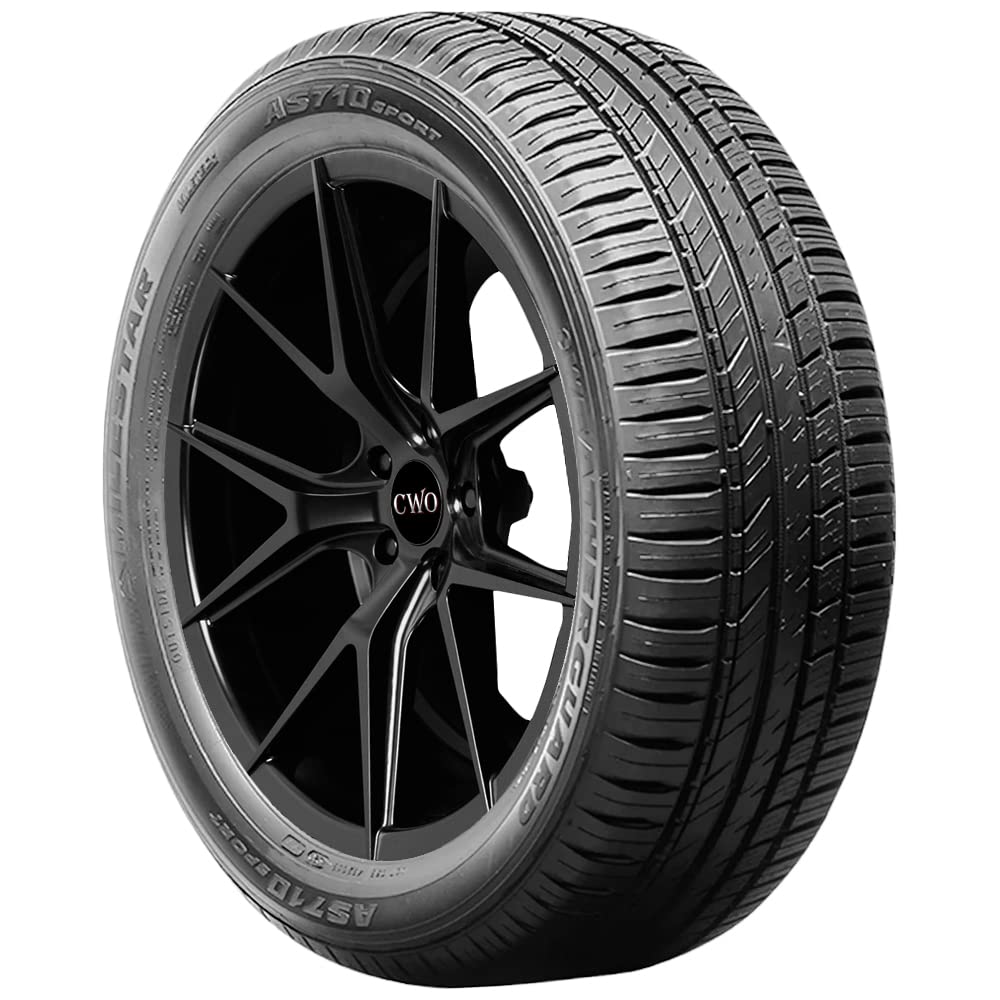
Price Check
Check the price of this tire at the following retailers:
Amazon DiscountTire PriorityTire SimpleTireDon't know the correct size tire to purchase? Start here!
In many ways, the Weatherguard AS710 Sport is a tire similar to the previous one. It’s designed for better performance with touring properties, something like the grand touring models we often mention here.
Similar to the newer addition, the Weatherguard AS710 Sport is made from the Miltech silica-enriched rubber compound for all-season performance. The tread pattern features variable sipes which should help with traction on damp roads and snow. For harsher rain conditions, the 4 circumferential grooves are designed to help channel water away from the blocks.
Even cheap tires do a solid job on dry roads and the Weatherguard AS710 Sport is no exception. Around town or on the highway, as long as you’re not asking too much, the tire will do a decent job. In wet conditions, the traction is reduced, but with a bit of cautious driving, you can get them to work. The tread pattern does an acceptable job at channeling water, so the aquaplaning resistance is adequate. Snow performance is as you’d expect – usable, but far behind even some mid-range all-season models.
In terms of refinement, the Weatherguard AS710 Sport doesn’t do a poor job. The comfort levels are solid to a point where the tire won’t feel bouncy or harsh. There are situations where the noise levels are good, mainly on smoother surfaces. At higher speeds or rough roads, you’ll hear the tire a bit more.
The weakest point of the Weatherguard AS710 Sport is the handling. As a tire that has “Sport” in its name, the responsiveness isn’t too sporty and the feedback is muted. In terms of the warranty, it’s excellent and with 70,000 or 80,000 miles of treadwear warranty, it’s as good as some of the premium models.
Pros
- Solid performance on dry roads
- Long treadwear warranty
- Surprisingly comfortable
Cons
- Snow and wet performance aren’t as good as some of its rivals
- The noise levels increase at higher speeds or rougher roads
#3. Weatherguard AW365
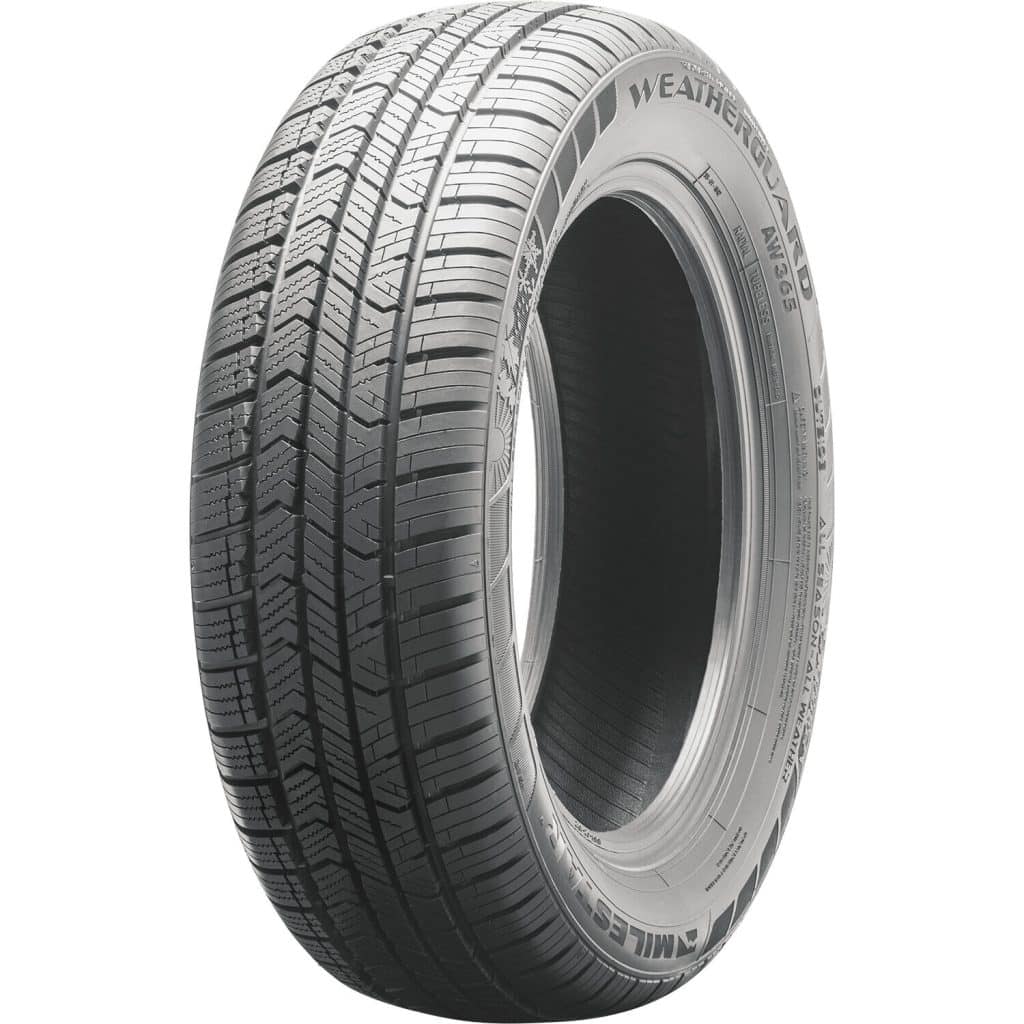
Price Check
Check the price of this tire at the following retailers:
Amazon DiscountTire PriorityTire SimpleTireDon't know the correct size tire to purchase? Start here!
Despite the Weatherguard name, this tire is more towards a touring option. The Weatherguard AW365 is advertised as an all-weather tire, so the winter performance should be better when compared with the previous ones
As an all-weather option, the Weatherguard AW365 comes with a 3PMSF rating, so snow traction should be better. The tread notches in the design aim to reduce noise levels and help improve longevity. For wet and packed snow, the multi-surface sipes are designed to increase traction.
The dry performance of the Weatherguard AW365 is pretty decent, similar to before. It will be fine for normal driving, as long as you’re not pushing it. A big surprise is the wet performance, where the tire does a better job of delivering traction on damp surfaces. Even the aquaplaning resistance is slightly better when compared to some of the other tires from Milestar. On snow, as an all-weather tire, you’ll get better traction. I wouldn’t start to compare it with the best in this category, but it’s not terrible.
Looking at the refinement, the Weatherguard AW365 seems to do a decent job. The comfort levels are solid and the tire will soften some of the bumps and imperfections. With larger potholes, the jolt is there, but it’s not terrible. As for the noise levels, the tire isn’t as quiet as the others, but it’s quieter than I was expecting. Milestar did a solid job in this regard and it won’t be obnoxiously loud.
The handling is where the Weatherguard AW365 falls apart. Enthusiasts will be disappointed with the responsiveness and sharpness of the tire, and they’ll struggle to find any feedback. With a treadwear warranty of 50,000 miles, it’s not the longest in the bunch.
Pros
- Acceptable wet performance
- Usable traction on snow
- Solid refinement levels
Cons
- Doesn’t handle particularly sharp
- The treadwear warranty is average
#4. MS775 Touring SLE
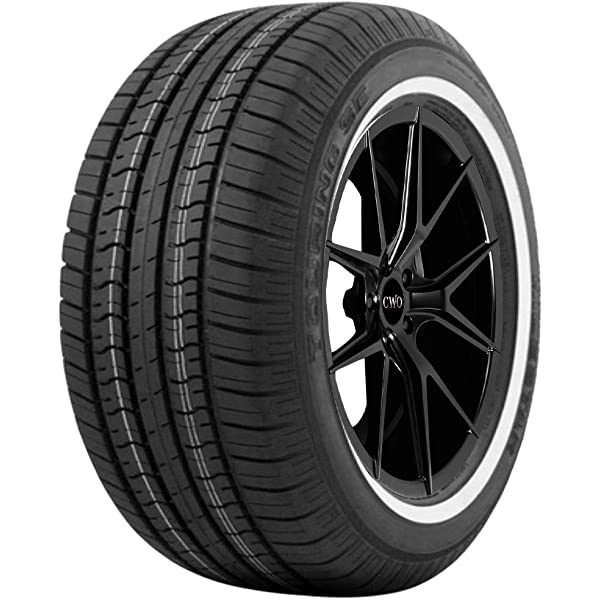
Price Check
Check the price of this tire at the following retailers:
Amazon DiscountTire PriorityTire SimpleTireDon't know the correct size tire to purchase? Start here!
Milestar has a modern tire with a classic look, at least that’s what the advertisement says. The MS775 Touring SLE is a touring tire for people that want that classic look to their older cars.
The tread pattern features interlocking blocks which should help the tire with traction and stability. Speaking of traction, the variable siping design is made to aid the tire with performance on wet roads. In addition to that, the open shoulder blocks should help evacuate water, meaning that the MS775 Touring SLE should offer good aquaplaning resistance.
As for the performance, the MS775 Touring SLE is a decent option for dry conditions. Most classic cars don’t have a ton of power, so the limited grip and traction levels won’t be an issue. Things take a slight turn for the worse in wet conditions. It will struggle a bit for traction, but only when you push it. The aquaplaning resistance is solid enough to keep the tire stable on the highway. Like most of the other tires from Milestar, the snow performance is barely there. It has some traction, but not the most usable one.
In terms of refinement, the MS775 Touring SLE is acceptable. The comfort levels are better, and the tire offers a relatively soft ride. It absorbs a solid amount of bumps and you won’t feel a lot of vibrations in the cabin from the larger potholes. As for the noise levels, they are acceptable, but far from the best. Around town there isn’t much noise, but that changes at highway speeds.
A softer tire usually means poor handling, and the MS775 Touring SLE isn’t an exception. The tire isn’t particularly responsive, which is disappointing for some enthusiasts. Unfortunately, the 40,000-mile treadwear warranty isn’t above the average in this category.
Pros
- Dry performance is good enough for a classic car
- Solid comfort levels
- Decent aquaplaning resistance
Cons
- Noise levels increase at highway speeds
- It will struggle a bit in non-dry conditions
#5. Patagonia A/T
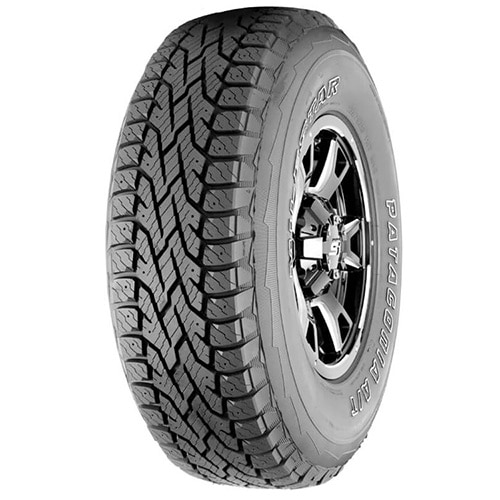
Don't know the correct size tire to purchase? Start here!
Moving away from the road-going tires we have the Patagonia A/T. This is an all-terrain option for people looking for an affordable tire with light off-road capabilities.
Similar to most all-terrain tires, the Patagonia A/T features an all-season compound molded into an aggressive pattern. The result of this should be performance in multiple seasons and road conditions. Milestar also designed the tire to be studdable, so we should see some decent ice performance.
On the road, the Patagonia A/T is as good as a cheap all-terrain tire can be. It offers usable performance on dry roads, enough for many drivers. In damp conditions, the traction is a bit limited, but it’s not terrible. Thanks to the aggressive pattern and open shoulders, the aquaplaning resistance is excellent. Snow performance is available and without the studs, the tire will do a decent job. It will struggle in harsher conditions, at which point the studs will help you out, especially on ice.
In off-road situations, the Patagonia A/T is similar to before – decent. It will handle dirt and gravel roads well and it won’t struggle for traction too much. The mud performance is available, but it’s behind some of the more popular options. It will do a decent enough job in shallower patches and that’s as much as you’re going to get. As a cheap all-terrain tire, I wouldn’t trust it with rock-crawling, except for maybe some smaller obstacles.
The refinement of the Patagonia A/T is acceptable, considering its category. Surprisingly, the comfort levels are decent and the tire does a solid job of providing a smooth-enough ride. The noise levels, on the other hand, aren’t so good. Many all-terrain tires are noisier, but in this case, you’ll get just a bit more growl even when driving around town.
All-terrain tires aren’t made for aggressive driving, so don’t expect razor-sharp handling. The Patagonia A/T will be fine for many people, but the responsiveness isn’t as good as even some mid-range rivals. With this tire, you’re getting a 50,000-mile treadwear warranty, which is on the same level as some premium models.
Pros
- Studdable
- Acceptable on-road performance
- Usable in lighter off-road conditions
Cons
- Slightly noisy even at lower speeds
- The off-road performance is behind even some mid-range models.
#7. Patagonia X/T
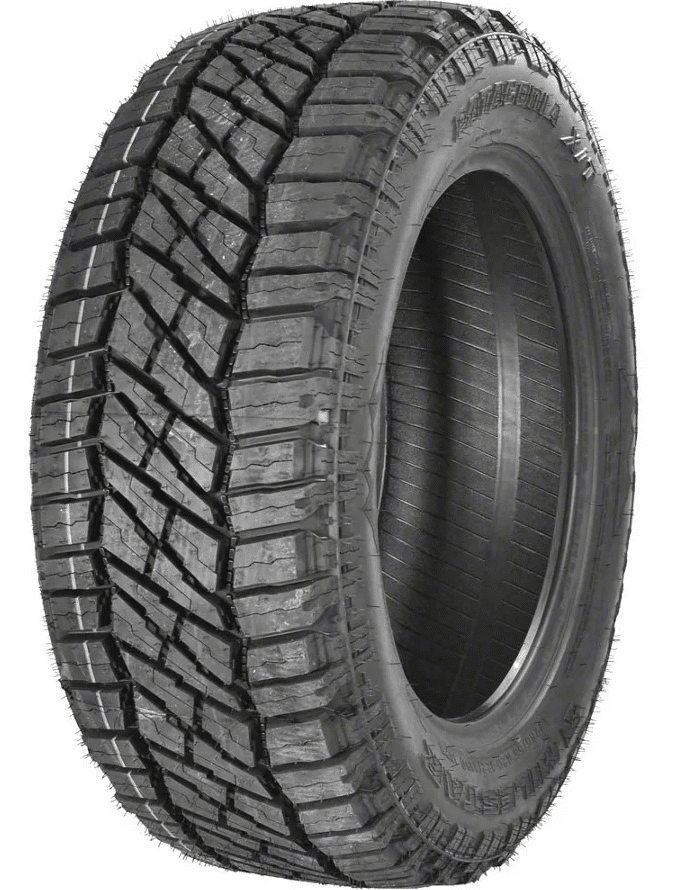
Price Check
Check the price of this tire at the following retailers:
Amazon DiscountTire PriorityTire SimpleTireDon't know the correct size tire to purchase? Start here!
In recent years we began to see hybrid tires that fall between all-terrain and mud-terrain tires. Milestar has a model from this category called the Patagonia X/T. It’s designed to have better off-road capabilities, without compromising on-road performance.
The Patagonia X/T features an aggressive tread pattern made from an all-season compound, meaning that it should deliver the promised performance. Milestar went with its Miltech 3-ply sidewall to increase strength and protection in off-road scenarios. For the road, the tire has variable pitch tread, which should help keep the noise levels acceptable.
In dry conditions, the Patagonia X/T does a solid job, considering it’s an off-road capable tire. It offers solid grip and traction, which should be fine in most situations unless you start to get aggressive. The traction on damp roads is the weakest point and the tire doesn’t feel as planted as I want it to be. On the flip side, the aquaplaning resistance is pretty good, thanks to the large grooves. In snowy conditions, the all-season nature of the tire shows its weaknesses. It does well in lighter conditions and will remain usable in slightly deeper snow. With that said, it will struggle a bit on a packed one.
Unlike the previous tire, the Patagonia X/T should offer better off-road performance and it doesn’t disappoint. It will tackle hard-packed surfaces with ease, minimizing slip and keeping your vehicle stable. You won’t get the same level as the premium models, but it’s good enough. Driving on mud is something the tire will do, as long as you’re not asking too much of it. There is a point where the mud will be too deep, but the self-cleaning pattern will try to remain consistent. Rock-crawling is something that the tire can do, but I wouldn’t start comparing it with a mud-terrain tire.
The biggest surprise with the Patagonia X/T comes in the refinement segment. You’ll have solid comfort levels, and the tire will do a decent job of softening and smoothing out road imperfections and bumps. There are better models, but I can fault Milestar for this one. The noise levels are also pretty low for a tire with an aggressive pattern. You will hear the growl, but it’s muted and unless you’re driving on rougher surfaces, it won’t be overly intrusive.
Off-road capable tires aren’t known for the most dynamic handling, so the Patagonia X/T is no different. It’s responsive enough for most people and that’s as much as you should expect from it. The treadwear warranty is less than the previous tire. With that said, a 40,000-mile warranty on a tire that does this well in off-road situations isn’t a bad thing.
Pros
- Capable off-roader
- Good aquaplaning resistance
- Grip and traction levels on dry roads are decent
Cons
- Will struggle on packed snow
- Traction on damp roads isn’t the best
#8. Patagonia M/T
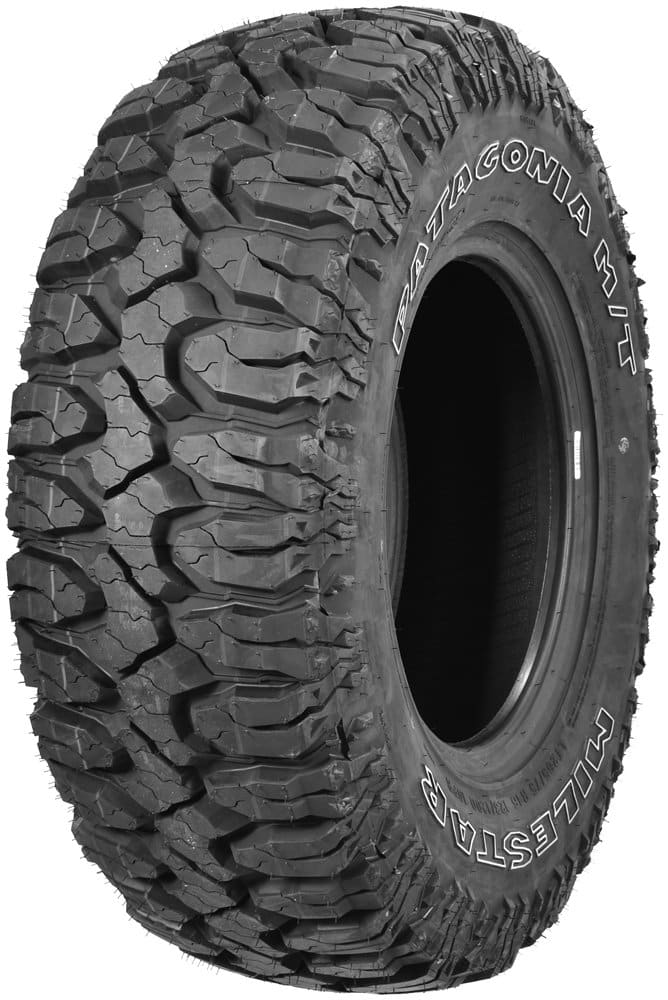
Price Check
Check the price of this tire at the following retailers:
Amazon DiscountTire PriorityTire SimpleTireDon't know the correct size tire to purchase? Start here!
The biggest and most capable off-road tire you can get from Milestar is the Patagonia M/T. As a mud-terrain option, this is a tire for maximum off-road performance.
Driving on dry roads with the Patagonia M/T is a solid experience. The grip and traction levels are enough for daily driving scenarios, as long as you don’t start to push it. It’s a similar story in wet conditions. The sipes do an acceptable job of offering traction on damp roads and the tread evacuates water pretty effectively. Snow isn’t a massive issue, as long as it’s unpacked. The tire offers solid traction even in deeper patches. Unfortunately, it will struggle a bit more over packed snow, like most of its rivals.
In off-roading conditions, the Patagonia M/T is a tire that can deliver the necessary performance. The traction on dirt roads is excellent and you won’t get too much slip in most situations. Mud also isn’t a problem, thanks to the tread pattern. It can handle deeper mud, something the other two models cannot. As a mud-terrain tire, you can rely on it for rock-crawling. The internal construction can handle getting deflated and you won’t worry too much about damaging it.
There is an important thing to note here. The softer compound of the Patagonia M/T means that you’ll have a pretty good performance on dirt roads. With that said, the softness also means that the performance will degrade much faster when compared with some of its rivals.
Like most mud-terrain tires, the Patagonia M/T doesn’t offer the best comfort levels. In many situations, the tire will feel a bit on the harsher side. You can play around with the pressure, but that won’t change the nature of the tire too much. Surprisingly, the noise levels are pretty decent. Despite the deep tread, the tire is acceptably quiet on the road.
No one will get a mud-terrain tire for its sporty handling nature, so you shouldn’t expect that from the Patagonia M/T. The responsiveness is fine for normal driving, and you won’t get anything else. There is some feedback, but it’s not the most pronounced one. Like most tires from this category, you won’t get a treadwear warranty, so this is not a drawback.
Pros
- Excellent off-road performance
- Surprisingly quiet
- On-road performance is pretty decent
Cons
- The softer compound means that the off-road performance will degrade sooner
- Not the most comfortable mud-terrain tire
Milestar Tires Buying Guide
What is there to like about Milestar tires? What is it that distinguishes these tires from the chasing pack? Are there areas where Milestar tires could or should have done better? Any shortcomings that could potentially be deal-breakers? This section has all the answers.
Why Should You Buy Milestar Tires?
Here’s why Milestar tires should be on your short list of tire brands to buy next:
1. Affordable
The main selling point of Milestar is the price. Being able to purchase a set of tires at a lower price is what makes these brands so popular. With this one, you’re looking at options that are cheaper than even some of the mid-range options we often talk about. This may sound like a good thing, but you should know that the lower price point means that you won’t get the same levels of performance as the premium models from the same category.
2. Plenty of models to choose from
Milestar isn’t the first young brand we talked about, but unlike many of its rivals, the number of options is more flexible. There are multiple touring and performance-oriented models for road use. You’re also getting several off-road capable tires, so there’s plenty to choose from.
3. Solid off-road performance
This doesn’t cover all models in Milestar’s lineup, just the ones that are capable of off-roading. Even though I wouldn’t classify them as the absolute best, they are cheap enough to have a good balance. You can get some decent performance in non-paved scenarios, which is a good option for people that can get away without going for a premium tire.
Why Should You NOT Buy Milestar Tires?
Here’s why Milestar tires may not be a good choice for you:
1. Limited wet performance
Most of the road-going models have the same flaw – wet performance. The aquaplaning resistance isn’t terrible, but the traction on damp surfaces is far behind its rivals. I wouldn’t classify these tires as the worst, but they are closer to the unsafe mark than the good one. If you do decide to go for one of these models, be mindful of the limitations.
2. No winter models
Even though Milestar has a few options with the 3PMSF rating, they are still all-weather tires. In my book, they are not a replacement for a dedicated winter tire, which is another downside of this brand. Having no option for harsher winter conditions limits your choices. I hope we’ll see Milestar covering this segment soon.
3. Adequate handling
None of the models I talked about offered something spectacular in terms of handling. Even with the performance models, there were some limitations which meant that you won’t be taking any of these on the track any time soon.
Frequently Asked Questions
Here are some of the common queries people have about Milestar tires:
Who makes Milestar tires?
Milestar exists as a separate brand, but like most of the companies in the tire industry, it falls under someone else. In this case, that someone else is Tireco Inc, a well-known domestic tire manufacturer that’s been around since the 70s.
Where are Milestar tires made?
Despite being a domestic brand, Milestar tires aren’t made in the USA. Instead, in most cases the tires are made in Taiwan. There are a handful of exceptions, but we can safely say that these are Taiwanese tires with a domestic stamp.
How long do Milestar tires last?
We don’t get a chance to test the tires for a long time to determine their longevity. Instead, we rely on the treadwear warranty and the experience of the people that have them. In terms of Milestar, the treadwear warranty is decent enough considering the price point. There are models which offer a longer warranty than some mid-range models, which is a positive aspect. As for other people’s experience, I didn’t come across tons of situations including premature wear, so I can say that the tires should last roughly as much as they’re intended to.
Is Milestar a good brand?
In my opinion, a good brand has very few drawbacks, and in terms of Milestar, that’s not the case. This doesn’t mean that we’re talking about a bad brand, so what’s the deal?
Milestar is an acceptable brand, offering affordable tires with decent performance. It’s not a good option for everyone, but some people may find it to be a solid option.
Are Milestar tires noisy?
Some cheaper tires suffer from high noise levels, but with Milestar, that’s not the case. Don’t get me wrong, the tires are far from the Turanza QuietTrack and the noise levels are higher. With that said, they aren’t terribly high, so I wouldn’t give them a bad grade.
Are Milestar tires good for snow?
All-season tires aren’t the best option for snow performance and with these you won’t get a lot. Milestar tires offer limited snow performance, which is a bit behind some of the mid-range models. Also, having no dedicated winter tire doesn’t help as there isn’t an option for the most extreme situations.
With that said, there are a few tires with the 3PMSF rating, which do a slightly better job. Again, they aren’t a replacement for winter tires, but are better than the M+S rated ones.
Conclusion
In this industry, there is a tire for everyone, expect for the cheap Chinese brands. To be fair, some people find use for them as well, so my first state remains true.
With Milestar, you’re getting an affordable tire which may not perform as well as the premium tires, but it’s far from the worst. People with older cars or less powerful ones, may find these to be a good option. The overall performance is safe enough for daily driving and you shouldn’t have any issues unless you decide to drive like a maniac.
Overall, Milestar isn’t a brand that you should completely avoid. The tires offer limited performance, but you also won’t be paying top dollar for them. You’re getting what you pay for, so if you feel like the performance is enough, then these tire may be a good choice for you.
